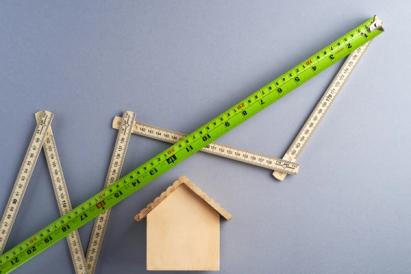What is the Difference Between Prequalification and Preapproval?
Written by:
Lauren Hargrave
Lauren Hargrave
Personal Finance Writer
Lauren Hargrave is a writer from San Diego who focuses on technology, finance, and healthcare. She worked in finance for seven years before pivoting to a career in writing, and now, instead of putting numbers into spreadsheets, she writes about them instead.
See full bio
Fact Checked by:
Dan Silva
Dan is the Vice President of Marketplace Lending at Own Up. Throughout his career, he has held executive leadership positions in the mortgage and banking industry.
See full bio

When buying a home, you may come across a library of terminology you’ve never heard before. Since much of the process to securing a mortgage and buying a home is unique to this singular event, we’re giving you a cheat sheet with everything you need to know about these two important steps in the homebuying process: home mortgage prequalification and preapproval.
Despite the fact that people may use the terms interchangeably, prequalification and preapproval are not the same thing. You don’t have to go through each of these steps to buy a home – for example, if you have enough money, you can purchase a home with cash. But most people who are planning to use a mortgage to buy a home will want to seek prequalification and preapproval prior to making a purchase offer on a house.
Here’s what you need to know about loan prequalification and preapproval – and the difference between the two.
What is Loan Prequalification?
If you're planning to use a mortgage to buy a home, then loan prequalification will likely be your first step in the home buying process. It’s typically a quick process (you can obtain an answer within minutes), and you can complete it online or over the phone.
During the prequalification application process, the lender will ask the borrower for information about their income, debt, assets, and credit score. The lender will then give the borrower an estimate on the size of the loan they can expect to receive, which will inform the borrower as to the price of the home they can afford.
This process is usually free and can take up to three business days to receive an official prequalification letter from the lender.
Do I Need to Receive Mortgage Prequalification?
The purpose of seeking prequalification is that it can help improve the home buying and mortgage process for borrowers. Here are three benefits to getting prequalified for a loan:
- It can help borrowers to focus their home search in terms of neighborhoods, prices, etc.
- It opens a conversation with the lender to explore different mortgage options so the borrower can get an idea of the type of loan that might be best for their situation.
- Borrowers can submit their prequalification letters with their home purchase offers to let sellers know they are serious buyers.
Since loan prequalification is only an assessment of what the borrower can afford and relies on unverified information submitted by the borrower (it doesn’t even require a credit check), the terms are subject to change. To receive the most accurate estimate from a lender, the borrower must submit as accurate of information as possible.
Another thing borrowers should note: Since lenders don’t verify borrower’s financial information prior to issuing a prequalification letter, it’s not as strong of an indication of financial ability to purchase a home as a loan pre-approval letter. So, if the buying environment is competitive, it might be advantageous for borrowers to complete the second step: loan pre-approval.
What is Loan Pre-Approval?
Loan pre-approval is usually the second step in the process of securing a mortgage and follows loan prequalification. In order to receive pre-approval from a lender, a borrower will typically:
- Complete the mortgage lender’s official mortgage application.
- Give the mortgage lender an estimate of the down payment.
- Provide the lender with the following documentation: employment history, proof of income (e.g. paystub), tax returns (the number of years required will vary by lender), bank statements, credit card balances, auto loan balances, and balances on other forms of debt.
- Give the lender authorization to retrieve your credit report and complete a financial background check. The lender’s credit check will be a hard inquiry, which can cause the borrower’s credit score to slightly dip, but the decrease should be short term.
- Pay the lender’s application fee (if required).
The pre-approval process typically takes about seven to 10 business days and once the borrower completes the above, they can expect to receive a pre-approval letter from the lender within that time frame.
The mortgage pre-approval letter will include a definitive loan amount for which the lender feels confident committing to the borrower as well as an estimated interest rate. The letter should tell the borrower how long the pre-approval will last so that they know how long they have to decide on a home.
Why Do I Need a Pre-Approval Letter?
Receiving mortgage pre-approval can speed up the time it takes to close on a home purchase. That’s because a lender has already taken a hard look at the borrower’s finances and reviewed their credit history, so unless any drastic changes occur, like the loss of a job, the borrower is likely to receive the loan.
With a pre-approval letter, borrowers can confidently look for homes within the specified price range, and the lender has already started the required due diligence to issue a mortgage.
I’ve Received My Pre-Approval Letter: Now What?
After borrowers receive their pre-approval letter, they can submit it to a seller when making an offer on a house. Since a lender has already taken a hard look at their finances, sellers are more likely to give buyers with a pre-approval letter more weight, which can make winning a bidding war easier in a competitive market.
Once the borrower signs the purchase agreement, they submit it to their lender, who will then begin the rest of the mortgage due diligence process. Here are some phrases you may hear during this time:
Locking or Floating the Interest Rate
Some lenders will give borrowers the opportunity to lock their interest rate at this time. Locking an interest rate can help ensure borrowers close with the same loan they were quoted during the pre-approval process. That’s because interest rates fluctuate, sometimes daily, and if rates go up, that can affect the affordability of the mortgage for borrowers and they might not qualify for as high of a loan amount as they would if interest rates were lower.
In some cases, the borrower may want to let the interest rate float. This is when the lender waits to lock the interest rate in anticipatation of rates dropping before the closing date. It’s important to talk to your lender or mortgage advisor to make the decision that’s right for you.
Appraisal
The lender may require a borrower to hire a third-party vendor like an appraiser to determine the value of the home. This is important because the lender may not want to issue a loan for an amount that is higher than the value of the home. If the value of the home comes in at or above the purchase price, and your financial information checks out, the lender will issue a loan commitment and you will be set to start the closing process.
The Bottom Line
The homebuying process is fraught with unfamiliar terminology and processes and there are many roads that can lead a borrower to purchasing the home they want. But by educating themselves, home buyers can position themselves to find a loan that works best for them.


